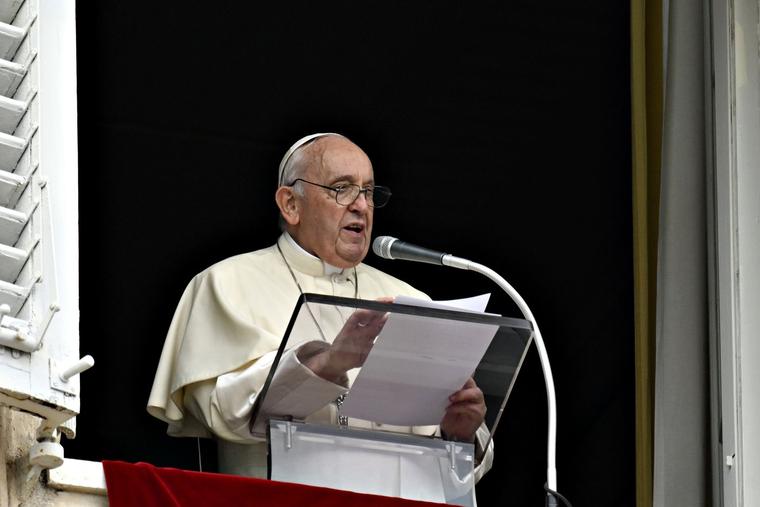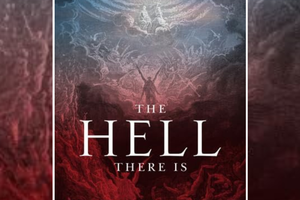Pope Francis and His Lack of Confidence in His Own Revolution
ANALYSIS: The appointments of key officials who report directly to him, as a means of securing his legacy, shows that he knows that he has not conquered everyone’s heart.

With a choice that is a natural sequel to that of Archbishop Victor Manuel Fernández as prefect of the Dicastery for the Doctrine of the Faith, Pope Francis has assigned Auxiliary Bishop Michele Di Tolve of Rome to lead the Roman Major Seminary and above all to the formation of priests — an assignment, says Pope Francis, which must be carried out in agreement with Bishop Baldassare Reina, vice-regent of the Diocese of Rome, but which at the same time must report only and directly to the Pope on its most critical issues.
Bishop Di Tolve’s appointment and the decree establishing his new powers arrived on July 5. When the announcement was made that Msgr. Di Tolve would become auxiliary bishop of Rome last May 26, he had not been assigned any office. Now he has an extraordinary task because it concerns the formation of priests.
In this sense, the appointment is in perfect continuity with that of Archbishop Fernández to the Doctrine of the Faith. The Pope has appointed Fernández with the aim — declared in a letter sent to the archbishop himself together with the appointment — of carrying forward his idea of developing theology with a constant dialogue that hardly (if ever) reaches the condemnation of doctrinal errors. Now he chooses a priest who has come from Milan to define the formation of priests in his diocese, effectively indicating the path that he wants to follow and that he wants others to follow. In short, after engaging on the development of doctrine, the Pope is also engaging on the formation of priests, thus finally defining what should have been, for some time, his paradigm shift.
However, Bishop Di Tolve’s appointment leaves other food for thought of particular importance. It is a typical appointment of Pope Francis because it concerns a person the Pope esteems and appreciates for what he has recognized as a pastoral commitment. Pope Francis met Di Tolve because an Italian cousin had referred him, shortly after he became a cardinal in 2001. There was excitement among young people for him. The Pope wanted to meet them. And in the Paul VI Hall last March, the meeting between the Pope and his parishioners occurred, which was the background that led to the episcopal appointment.
Bishop Di Tolve had already been rector of the seminary from 2010 to 2014 in Milan and later given a different position. But this was only a plus for Pope Francis, who probably didn’t even question the reasons why Bishop Di Tolve had been assigned to another post.
The second reason this is a typical Pope Francis appointment is that the Pope made him a bishop. Whenever the Pope wants a general in the field or someone who reports directly to him, he appoints him bishop. It has happened for financial matters but also for legal ones.
The third reason Bishop Di Tolve’s nomination is a typically Pope Francis’ one is that he comes from outside. He will be ordained bishop in the Milan Cathedral on Sept. 2 and immediately go to Rome to make himself available and work. With the appointment of Bishops Di Tolve and Baldassare Reina as deputy managers, Pope Francis staffs the vicariate with priests who do not come from, nor know, the capital. For the Pope, it is probably a way of breaking hierarchies, by surprise, and inserting new human material to overcome situations that had become gangrenous. Or, simply, it is a way of building a “fence” around Cardinal Angelo de Donatis, the Pope’s current vicar, whom the reform of the vicariate has made a simple auxiliary. Cardinal De Donatis, however, has a cordial relationship with the Holy Father, despite some friction between the two during COVID. The fact remains that the Pope, when he wants renewal, draws from the outside, from areas other than the usual ones.
The fourth reason Bishop Di Tolve’s nomination is typically a Pope Francis’ nomination, concerns a note in the last line of the decree, which emphasizes that, for more complex issues, Bishop Di Tolve will have to report directly to him. In general, therefore, the Pope wants to have the last word on everything and take care of the question of formation personally.
Finally, it is an appointment typically in line with those of Pope Francis because it will be the first bishop rector of the seminary of the Diocese of Rome who is not recognized as an intellectual or known for any major published works, and this is what the Pope wants: pastors, so that formation is all pastoral and missionary.
With this appointment, Pope Francis completes the picture of the reform of the Vicariate of Rome, but above all, adds another piece to what he wants the team to be when he is gone. It is, after all, another step to ensure his legacy.
We are faced, however, with an uncertain legacy. Pope Francis consistently links everything to his person; he asks that everything refers back to him; he wants his role as Pope to be fully recognized, and no one can do otherwise. In doing this, however, he demonstrates that he has not implemented a true conversion of hearts but wants to impose his vision, having failed to move it forward in recent years. The general excuse is that there is resistance to his pontificate. The point is that no pontificate comes out of nothing and that, to be fully appreciated, every Pope must account for his changes.
It is not enough to revolutionize the image of the Church. It is not enough to change their structures. It is not enough to try to break the chains of corruption, actual or presumed. In the end, it matters to understand and love the Church as an institution in a profound way that allows us to look to the future with serenity. By securing his inheritance, Pope Francis ultimately demonstrates that he does not have confidence in his revolution and its effects. He knows he has not conquered everyone’s hearts. This pontificate has been characterized by the presence of “guardians of the revolution,” capable of branding every critical position as “anti-Papist,” even if this position was relatively moderate and just raised questions rather than contesting the authority of the Pope.
With the just announced upcoming consistory, Pope Francis has continued the criteria he has followed so far. Previous popes, while being able to choose personally, have always thought of a Church with many forces in balance. Cardinals Danneels, Martini and Kasper were indeed not cardinals along the lines of John Paul II. Still, John Paul II chose them and created cardinals he knew were necessary for contingent situations. He wanted a Church where all positions could be represented and where there was a balance of ideas. Ultimately, the Pope was responsible for the synthesis and for guaranteeing Church unity.
Pope Francis instead makes a different reasoning. The papacy is missionary; it has to stay on the periphery and is based on relationships rather than on the guarantee of unity. And so, to maintain coherence, he needs bishops and cardinals aligned with him. To have a balance, however, he created a synodal process to allow a debate that would enable everyone to feel included.
It is a different revolution that seeks a balance between different positions. Still, above all, it aims to legitimize the role of the Pope, who, in the end, tends to centralize everything. The question that remains is: How long will all this last?
Editor’s note: This story by Andrea Gagliarducci first appeared today at MondayVatican.com. It is reprinted with the author’s permission.
- Keywords:
- pope francis
- roman curia
- papal appointments
















